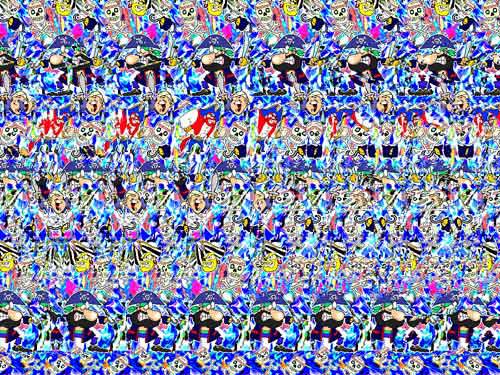Dreams are like "stare-o-grams"
The "Magic Eye" stare-o-gram is an example of what dream interpreting is often like. The version of the dream we hear, the so-called "manifest content", is like the surface image we first see. After all the work is done, though, a deeper meaning often "emerges" (with some luck), somewhat like the 3-D image in the stereogram. Similarly, holograms (3-D pictures, like on many credit cards) can be used to illustrate the point that what you see (in a dream) depends on your point of view (parallax).
It should be obvious that dream "language" is heavily influenced by the surrounding culture. The same "message" can be couched in any number of differing images which depend on the environment in which the dreamer is living and/or raised. This is similar to what Artemidorus said when he advised his son to pay attention to "local customs and peculiarities of every place" (quoted in section 2.G, p. 9).
Moreover, each time we listen to a dream, we do so from a given standpoint and perspective and we interpret accordingly. Even the associations of the dreamer will shift and change from day to day, if not from hour to hour. There is thus no one, correct meaning of a dream. Each interpretation, though, if done honestly and carefully, has some validity and truth. As long as the dreamer feels some agreement with what is said, they are probably all correct to some extent.
Previous section Next section List of sections List of chapters

